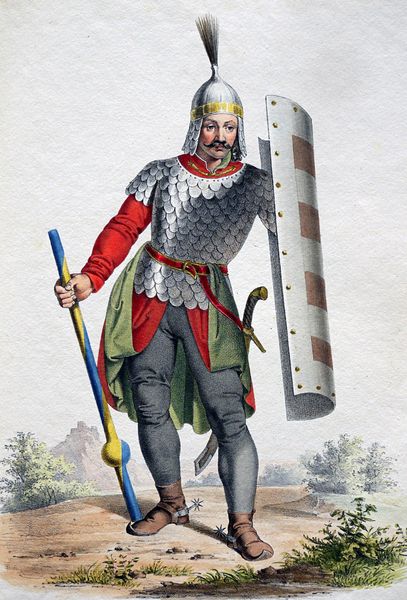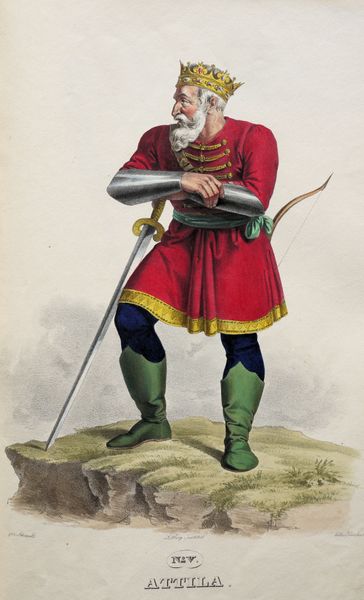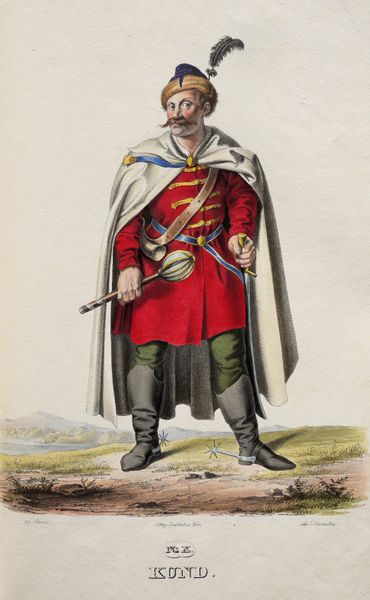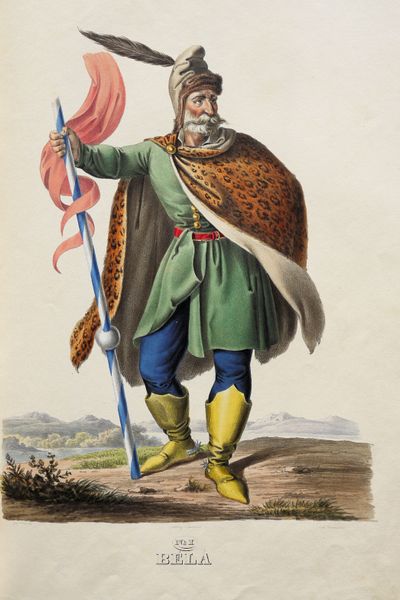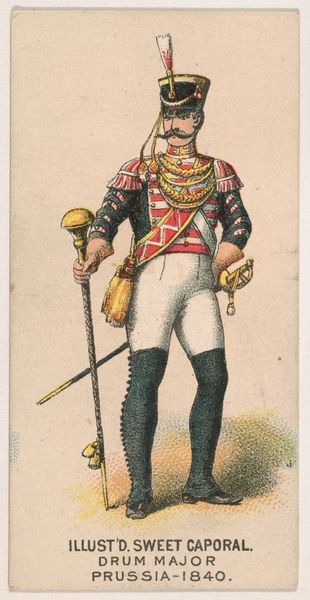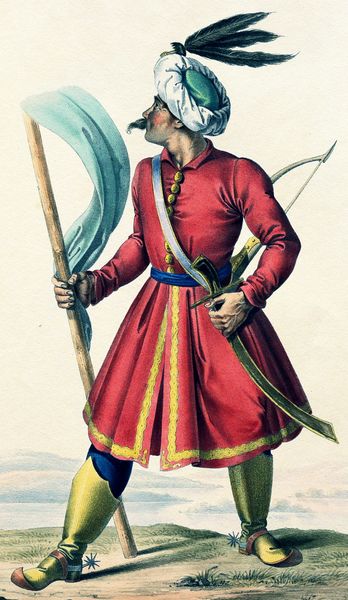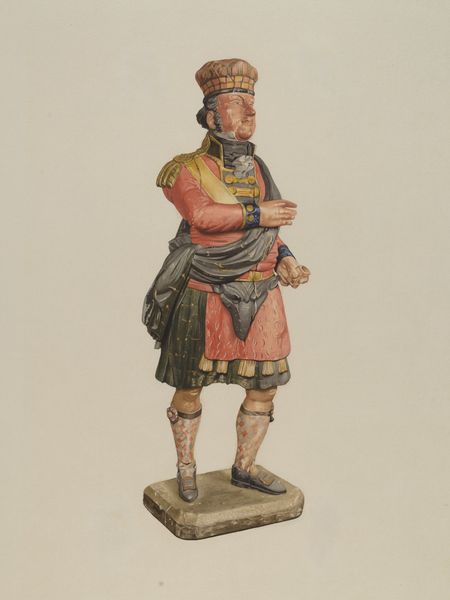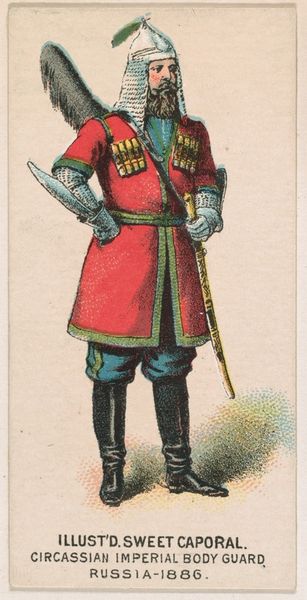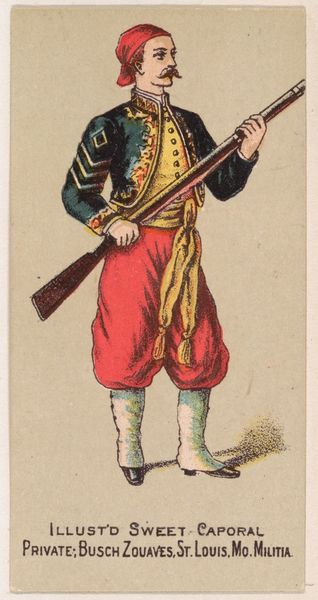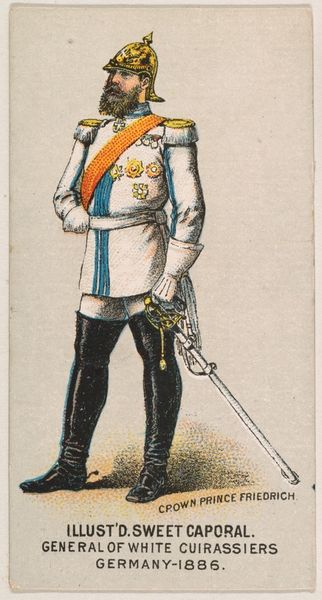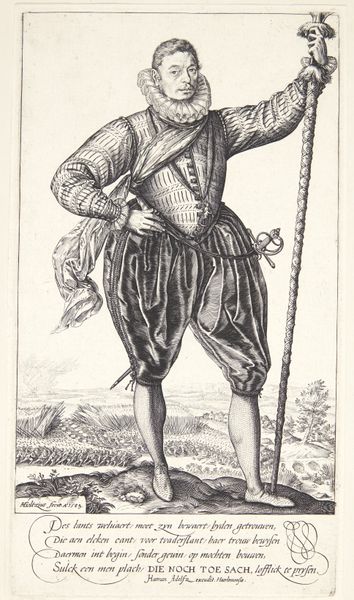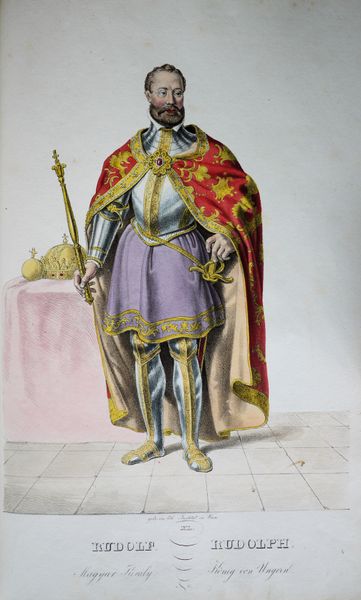
watercolor
#
portrait
#
figuration
#
watercolor
#
romanticism
#
genre-painting
#
portrait art
#
watercolor
Copyright: Public domain
Editor: This watercolor portrait from 1828 by Josef Kriehuber titled "Zoltan" strikes me as very theatrical, almost like a character in a play. The vibrant colors and the man's elaborate costume give it a dramatic flair. How do you interpret this work? Curator: It's fascinating to consider this portrait through a lens of cultural identity and performance. The subject, Zoltan, is adorned in what appears to be traditional attire, signaling his belonging to a specific community or perhaps his aspirations. What do you think about the meaning of "traditional attire" during this era? Editor: I see your point. Was Kriehuber, perhaps, engaging with notions of nationalism, portraying an idealized vision of Hungarian identity at a time when national identities were being constructed and negotiated? Curator: Precisely. This portrait participates in a discourse about belonging, power, and representation. What's interesting is to consider how Zoltan may have actively participated in this visual construction of his identity. Were these clothes part of his every day wear? Or a costume? The sword could represent both cultural pride, belonging to a people, but can also signal political strength or threat. Editor: It's making me think about how fashion can be used as a statement, and how easily these kind of statements can become politicized. So Kriehuber might have been showing more than just the physical appearance of the man, but actually reflecting all these social tensions. Curator: Yes. Moreover, the Romantic style emphasizes emotion and individuality, yet this is contained within the framework of national type. It reveals a complex tension of identity and the individual experience. What does it tell us about how we define community and nation? Editor: This is so fascinating to unpack. It shows how even seemingly straightforward portraits are embedded in deeper sociopolitical narratives. Curator: Absolutely. It invites us to consider how identities are formed, performed, and perceived within specific historical contexts, prompting essential questions about belonging and power.
Comments
No comments
Be the first to comment and join the conversation on the ultimate creative platform.
